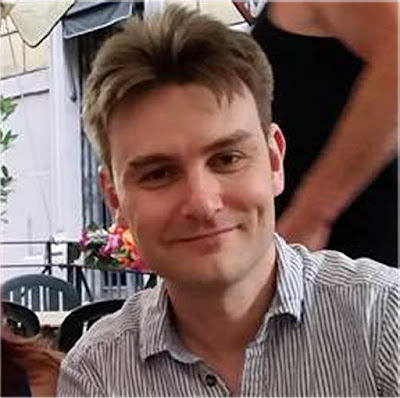La saison 2015 avait permis le dégagement de 12 pièces d’un bâtiment commercial (L) dont la limite Est, une rue Nord-Sud, semblait indiquer l’existence d’autres pièces/magasins. Avec l’aide de la municipalité d’Amphipolis, le déplacement de la conduite d’eau qui recouvrait partiellement certaines pièces a permis la poursuite de la fouille de ce secteur.
C’est donc avec impatience et curiosité que s’est ouverte la saison 2016, dirigée par le Dr Zisis Bonias (ministère de la culture grec) et le professeur Jacques Perreault (université de Montréal). L’équipe internationale d’une quarantaine d’étudiants, assistés par des ouvriers chevronnés s’est donc appliquée avec enthousiasme et énergie, malgré la chaleur redoutable, à creuser et dégager la suite de cette imposante structure avec l’aide du charmant et compétent personnel de la fouille.
La fouille des pièces du bâtiment (H) situé à l’arrière de la structure commerciale laisse penser de prime abord qu’il pourrait s’agir d’ateliers et non d’habitations. Par contre, dans la première pièce du bâtiment Q, les fouilleurs ont dégagé une baignoire avec sortie d’eau vers la rue ainsi que les possibles vestiges d’un escalier menant à l’étage, ce qui nous orienterait plutôt vers un habitat.
Quant au bâtiment P, nous en saurons plus lors de la prochaine campagne, le sol récent de la seule pièce fouillée n’ayant fourni que peu de matériel.
Les fouilleurs, toujours par équipes, s’occupaient l’après-midi du matériel trouvé le matin : lavage, tri, répertoire des objets, et surtout repérage des formes, sous la supervision du personnel de la fouille.
Cette année la découverte de monnaies a été plus modeste, nous avons par contre été submergés par les amphores !
Au musée d’Amphipolis, les spécialistes se sont succédés pour notre plus grand plaisir et profit : Joanne Cutler a poursuivi son étude des pesons, Kees Neeft celle de la céramique corinthienne et Stefanos Gimatzidis la céramique thrace, Angelos Gkotsinas s’est occupé des nombreux os d’animaux. Quatre restaurateurs, Wendy Reade, Vasileia Liakatou, Yannis Kartkatis et Anne-Marie Cannatella se sont occupés à remonter certains vases, nettoyer les monnaies etc., et enfin Eugenia Gkatzogia, archéo-botaniste, s’est jointe quelques jours à l’équipe.En dehors de l’apprentissage technique de la fouille (stratigraphie, dessin, instruments de topographie, introduction à certaines formes de céramique etc.), les étudiants participent aux sorties et visites guidées de sites et musées de la région (dont Stagira, Vergina, Thessalonique, Philippes… ) et ont l’occasion de relaxer un brin lors du grand week-end à Thasos !Je termine cette note par une petite anecdote. Nous savions que nos découvertes récentes à Argilos, notamment celle de ce grand bâtiment commercial, avait eu un large écho dans la région, rendant la fouille désormais célèbre ( !). En voici d’ailleurs la preuve :Jacques Perreault
Université de Montréal
Keven bienvenu! Welcome Mark!
The 2016/17 academic year has begun at the Institute. This year the Institute’s Elisabeth Alföldi-Rosenbaum Fellowship will be held by two individuals, not one. Keven Ouellet, a Ph.D. candidate in the Department of History at the Université de Montréal will be with us for the entire year. A native of Quebec City, Quebec he holds a B.A. degree from the Université Laval and a M.A. in Classical Archaeology from the Université de Montréal. Keven is well known at the Institute having dug for many seasons at ancient Argilos with Prof. Jacques Perreault and having participated in the Colloquium we held in the memory of Frederick E. Winter in 2012 with a paper on the defensive fortifications of Argilos. While in Athens he will continue research on his doctoral dissertation which focuses on the defensive fortifications of ancient Greek city-states in northern Greece using a multidisciplinary approach including the historical, geographical and architectural studies of these fortified settlements and their surrounding regions. Keven will also try to demonstrate the presence of local and regional phenomena in the architectural styles which are most likely linked with the movement of populations coming from the Cycladic Islands and the West coast of Anatolia. An outgoing individual with many fieldwork experiences, he will share the results of his research in the spring with an Institute lecture.
This fall Dr. Mark D. Hammond will be with us as well. In May, 2015 he received his Ph.D. from the University of Missouri after having earned an M.A. there too. I know Mark well as he was one of my top undergraduate students at Brock University. His previous research focused on the 4th – 7th centuries CE ceramic finds from the Panayia Field excavations at ancient Corinth in their local and regional contexts. Mark shared this study with us in an Institute lecture in the winter 2015. Mark returns to Greece to research a small body of ceramic material recovered by the ASCSA during the 1933 excavations of the so-called Hill of Zeus cemetery in Corinth. These 43 intact funerary vessels are not only informative of the burial practices and rituals performed in Late Roman Greece, but the fabrics of the majority of these vessels also appear to correspond with some of the local and regional wares that Mark characterized during his dissertation. Thus, it is possible to comment not only on the distribution patterns of funerary vessels, but also on the similarities and differences of vessels manufactured at different regional centres that were ultimately put to the same use. In December Mark will update us on this research in an Institute lecture.
So come to the Institute’s lectures and events this fall to meet Keven and Mark and to welcome them warmly to our archaeological community.
Cordially,
David Rupp
Director










No comments:
Post a Comment